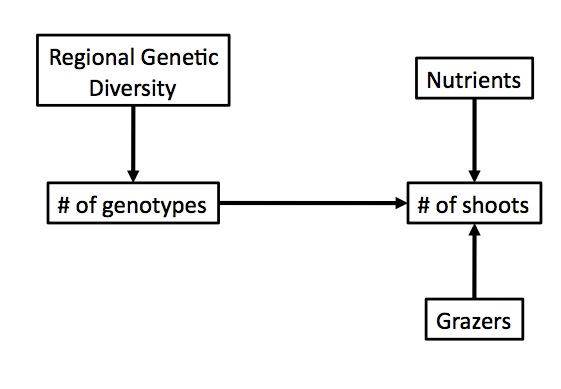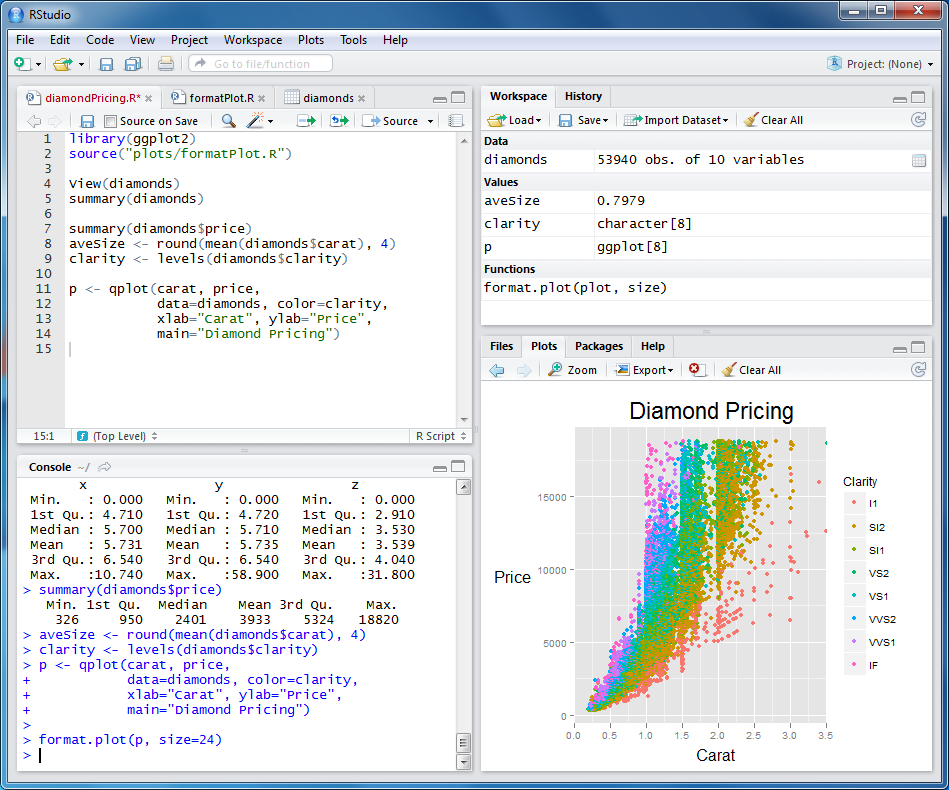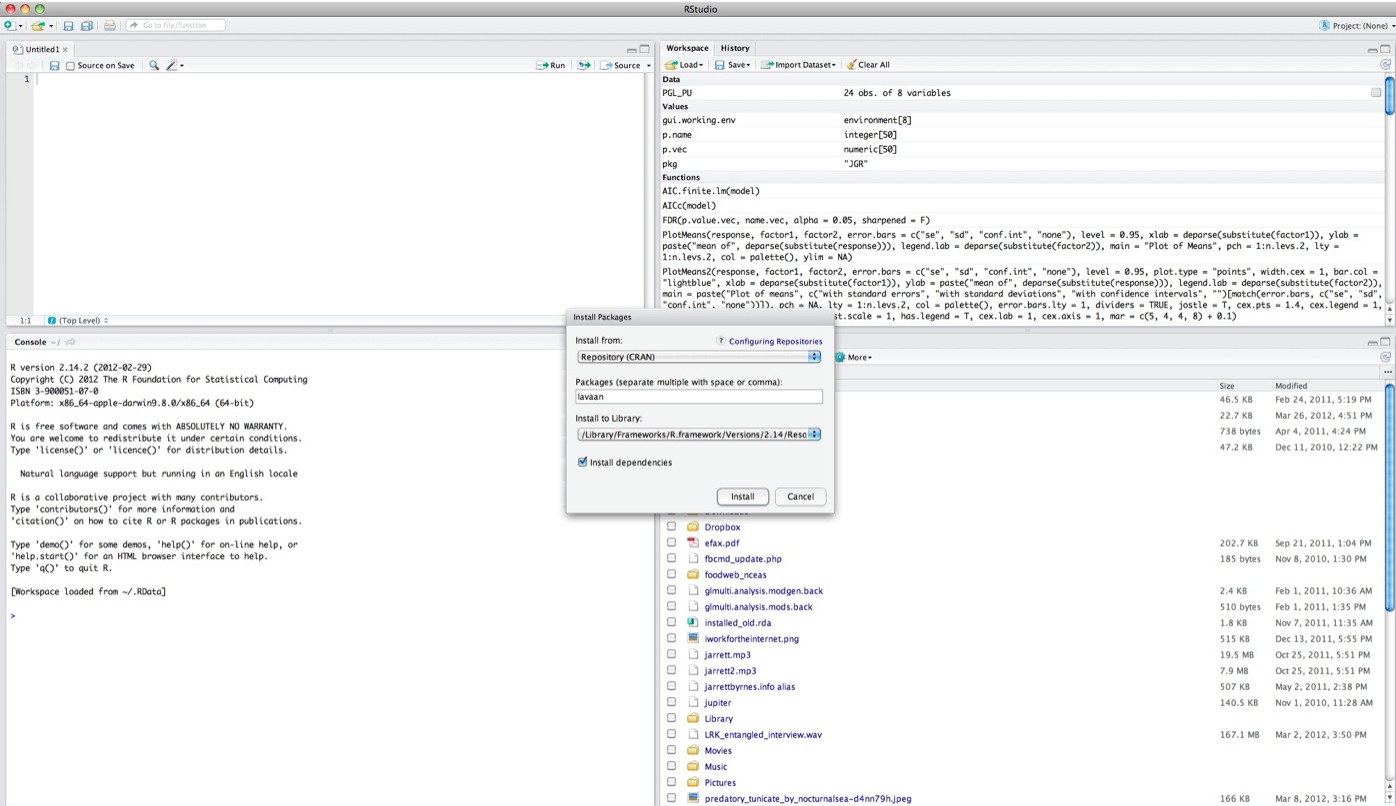UMass Boston
https://biol607.github.io/
First, Some New Technology
https://etherpad.wikimedia.org/p/607-intro
This class will use collaborative note-taking
Research shows that this enhances learning!
It’s also a way to ask me a question during class
Second, Some Old Technology

- Green: Party on, Wayne
- Red: I fell off the understanding wagon
- Blue: Write a question/Other
And Now, A Pop Quiz!
Outline for Today
- What are we doing here?
- Who are we?
- How will this course work?
- A Philosophy of answering scientific questions with data
- R!

Computational
#subset consumptionData into mixed diet treatments only (mixed diet BOX #'s are multiples of 5)
mixedData<-consumptionData[consumptionData$BOX %% 5 == 0,]
mixedData$delta<-mixedData$ADD_WT - mixedData$REM_WT
mixedData$rate<-mixedData$delta/mixedData$days
#reshape to get species-specific consumption rate table
mixed.summary<-ddply(mixedData,.(BOX,SP_CODE),function(x){
data.frame(CONSUMPTION_RATE=mean(x$rate,na.rm=TRUE))
})
#############fit linear models (not including consumption--see below)
LMtestChange <- lm(formula = TEST_CHANGE ~ TREATMENT, data = expData, na.action = na.omit)Code Forces You to Be Explicity About Theory
Computational
#subset consumptionData into mixed diet treatments only (mixed diet BOX #'s are multiples of 5)
mixedData<-consumptionData[consumptionData$BOX %% 5 == 0,]
mixedData$delta<-mixedData$ADD_WT - mixedData$REM_WT
mixedData$rate<-mixedData$delta/mixedData$days
#reshape to get species-specific consumption rate table
mixed.summary<-ddply(mixedData,.(BOX,SP_CODE),function(x){
data.frame(CONSUMPTION_RATE=mean(x$rate,na.rm=TRUE))
})
#############fit linear models (not including consumption--see below)
LMtestChange <- lm(formula = TEST_CHANGE ~ TREATMENT, data = expData, na.action = na.omit)Coding is power
Computational
#subset consumptionData into mixed diet treatments only (mixed diet BOX #'s are multiples of 5)
mixedData<-consumptionData[consumptionData$BOX %% 5 == 0,]
mixedData$delta<-mixedData$ADD_WT - mixedData$REM_WT
mixedData$rate<-mixedData$delta/mixedData$days
#reshape to get species-specific consumption rate table
mixed.summary<-ddply(mixedData,.(BOX,SP_CODE),function(x){
data.frame(CONSUMPTION_RATE=mean(x$rate,na.rm=TRUE))
})
#############fit linear models (not including consumption--see below)
LMtestChange <- lm(formula = TEST_CHANGE ~ TREATMENT, data = expData, na.action = na.omit)Repeatable Research
Data (acquisition)
How do I get good data here?
Data (maintaince)

Analysis (philosophy)

Analysis (visual)

Analysis (model)
##
## Call:
## lm(formula = shoots ~ treatment.genotypes, data = eelgrass)
##
## Residuals:
## Min 1Q Median 3Q Max
## -27.473 -10.723 -1.299 8.955 35.701
##
## Coefficients:
## Estimate Std. Error t value Pr(>|t|)
## (Intercept) 30.664 5.324 5.760 2.73e-06 ***
## treatment.genotypes 4.635 1.401 3.308 0.00245 **
## ---
## Signif. codes: 0 '***' 0.001 '**' 0.01 '*' 0.05 '.' 0.1 ' ' 1
##
## Residual standard error: 16.39 on 30 degrees of freedom
## Multiple R-squared: 0.2672, Adjusted R-squared: 0.2428
## F-statistic: 10.94 on 1 and 30 DF, p-value: 0.002449for Biology

for Biology
SCIENCE FIRST!
What is your model(s)?
THEN decide on statistical approach
Can you get data to paramaterize that model?
How does biology inform your modeled results?
Avoiding The Replication Crisis

Course Goals
- Learn how to think about your research in a systematic way to design efficient observational & experimental studies.
- Understand how to get the most bang for your buck from your data.
- Make you effective collaborators with statisticians.
- Make you comfortable enough to learn and grow beyond this class.
Who are You?
Name
Lab
Brief research description
Why are you here?
Outline for Today
- What are we doing here?
- Who are we?
- How will this course work?
- A Philosophy of answering scientific questions with data
- R!
Lecture and Lab
- T/Th Lecutre on Concepts
- Occasional Paper Discussion
- Th Lab (which will cover some homework problems!)
Yes, Lectures are Coded
R Markdown sometimes with Reveal.js
Readings for Class: W&S

Whitlock, W.C. and Schluter, D. (2014) The Analysis of Biological Data, 2nd Edition.
http://whitlockschluter.zoology.ubc.ca/
Chapter 1 this week!
Readings for Class: Grolemund & Wickham

Grolemund, G., and Wickham, W. 2016. R for Data Science.
http://r4ds.had.co.nz
Quizes
Before and After Class
Measures understanding - and attendance!
Will drop lowest two
10% of your grade
Problem Sets
- 40% of your grade
- “Adapted”" from Whitlock and Schluter
- Will often require R
- Complete them using Rmarkdown
Midterm
Advanced problem set
Due Nov 4th
20% of your grade
Final Project
- Topic of your choosing
- Your data, public data, any data!
- Make it dissertation relevant!
- If part of submitted manuscript, I will retroactively raise your grade
- Dates
- Proposal Due Oct 7th
- Presentations on Dec 15th
Paper due Dec 16th (but earlier fine!)
30% of your grade
Extra Credit 1: Use Github

- This whole class is a github repo
- Homeworks will be posted as part of the repo
- If you submit your homework via a pull request, +1 > - There will be a github tutorial outside of class hours
Extra Credit 2: Be Nate Silver

Extra Credit 3: Livin’ La Vida Data Science
 |
 |
Extra Credit 4: Data Science for Social Good

Outline for Today
- What are we doing here?
- Who are we?
- How will this course work?
- A Philosophy of answering scientific questions with data
- R!
Our Approach to Data Analysis
Data from Reusch et al. 2005 PNAS
Start with a Question

Does seagrass genetic diversity increase productivity?
Build an Understanding of the System
Literature
Observation
Disciplinary History
Construct a Causal Model of the System

Construct a Causal Model of the System

Construct a Causal Model of the System

Construct a Causal Model of the System

Collect the Data to Best Estimate & Test the Model

Genotype
Genotypes
Genotypes
Look at Your Data

Fit a model(s), chosen to suit data & error generating process!
Analysis!

Build Open Reproducible Research
Many Methods of Sharing Data, Methods, and Results Beyond Publication
GitHub - public code repository
FigShare - share key figures, get a doi
Blog - open ‘notebook’
Dryad or Other Repository - post-publication data sharing
Questions
Outline for Today
- What are we doing here?
- Who are we?
- How will this course work?
- A Philosophy of answering scientific questions with data
- R!
What is R?
Why R?
- Free
- Huge growing community
- Packages to do almost anything
- Makes reusable research easy
- C-based language
- Syntax naturally matches analytical thinking
What is R Studio?

- Cross-Platform Graphical User Interface for R
- It is not R
Let’s Fire It Up!
Don’t have it? Download it from http://rstudio.org**
What do you see?

The Console and Math
1+1## [1] 2
You try - different mathematical operators
Everything is an Object
a.number<-1+1a.number## [1] 2
You try - what can you save as an object?
Note: Comment Your Code as You Write with #
The text after # is not evaluated.
#This is going to be the number two
a.number<-1+1#####----------
# You can get creative with comments to separate code blocks
# And write a lot, which is good practice
#####----------Your comments tell readers - including yourself - what you are doing
Functions Work on Objects
sin(a.number)## [1] 0.9092974How to get help for a function
?cos
help(cos)
??'cosine function'Lots of Object Types - like Data!
head(cars, n=3) #note the n= argument!## speed dist
## 1 4 2
## 2 4 10
## 3 7 4
Try looking at all of cars and names(cars)
Graphics are a Snap
plot(speed ~ dist, data=cars)
Look at ?plot to see other arguments to change appearance
Installing Packages

Installing Packages

Installing Packages
You can also install packages from the command line.
install.packages('ggplot2', repos='http://cran.case.edu/', dependencies=TRUE)Using one of the above methods, install the package ggplot2 and its dependencies now.
Using a Package
library(ggplot2)
qplot(dist, speed, data=cars)
You Try It
- Load ggplot2 and look at the mtcars data set
2.Look at the qplot help file & demos
- Make two plots (ggplot or plot)
